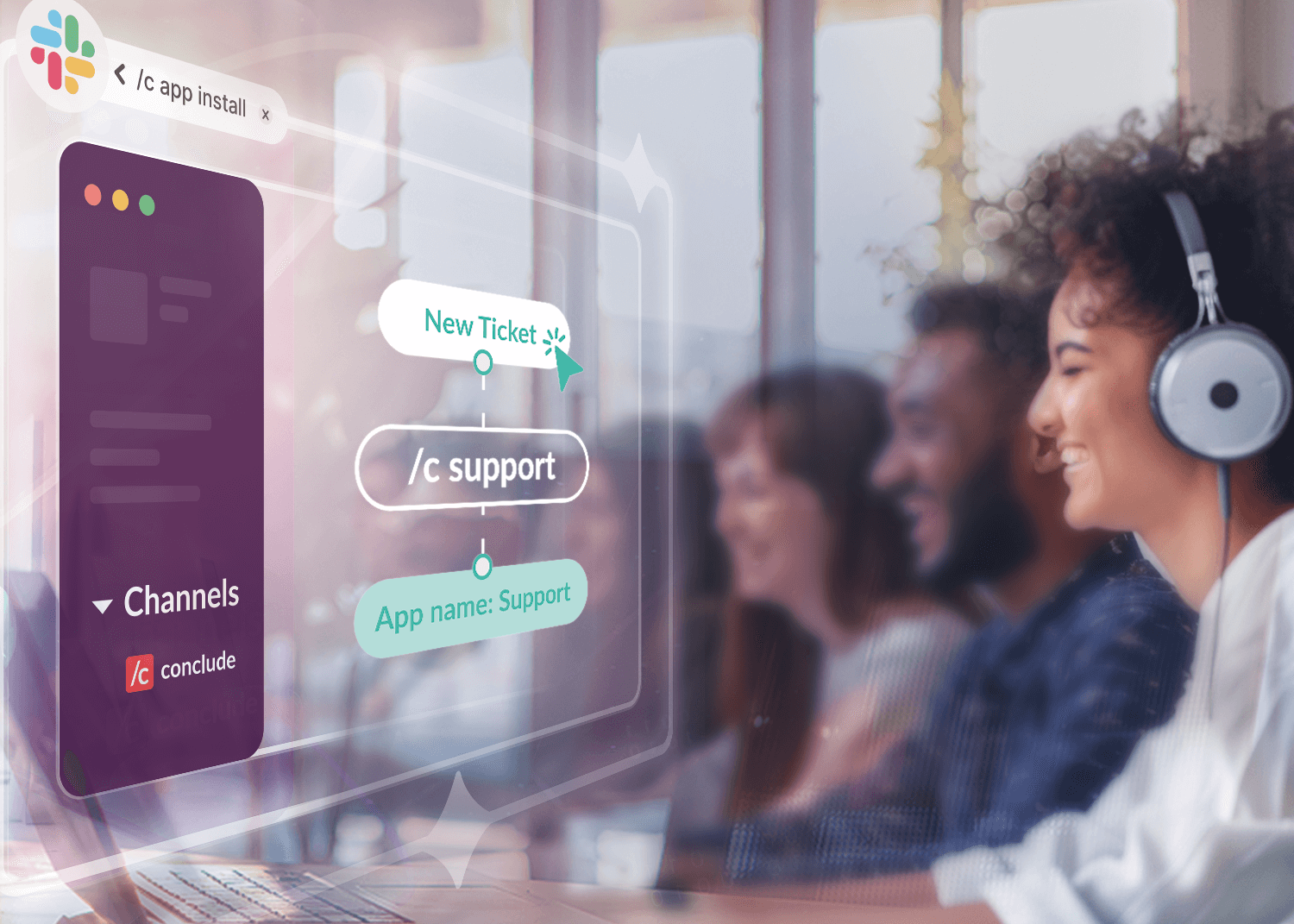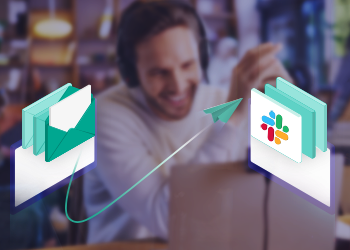
February 22, 2024
Slack, along with Microsoft Teams, has become a key platform for businesses aiming to improve internal team collaboration – including the management of issues and incidents – and external support.
With an estimated 32.3 million daily active users in 2023, the company introduced Slack Connect in June 2020 – a solution which enables companies to securely connect and collaborate with external organizations, partners and clients. Initially hailed as a platform for internal communication, Slack has evolved beyond its original purpose.
With so many integrations and solutions available which convert it into a conversational ticketing platform, what is the best set up when using Slack for Customer Support?
The answer depends on several things, including if you are focused on providing support for internal or external users or customers, or a combination of both.
The Key Differences Between Internal and External Support
Internal support:
This usually refers to issues inside an organization, including IT Help Desk tickets, issues, bug tracking and incidents. Many companies have their own internal solutions and may use a combination such as Jira, Zendesk, ServiceNow, or other Slack-native incident management apps like Rootly and incident.io.
Conclude’s workflow apps go beyond incident management and integrate with Jira to manage different types of issues and activities. Tickets can be opened inside a dedicated channel as threaded messages, or as new activity channels which are “branched” from a main channel where the app is installed.
See: Conclude Adds Threaded Messages to Its Conversational Ticketing System on Slack
External support:
Similar to Slack Connect, support solutions which manage external customer issues have previously been covered by tools such as Halp – which was acquired by Atlassian in 2020. Various companies have attempted to replace what Halp was providing, and while there are several good solutions on the market, many lack integration with Microsoft Teams or Zendesk.
This limitation can be a challenge for teams that work across different platforms, or have customers using different workspaces. Although this issue can be addressed with “connector” solutions like Zapier or Make, since these are not integrations they offer a less robust solution.
In Q2 2024, Conclude will be offering a solution which allows customers to connect directly with multiple external customers through dedicated Slack and Microsoft Teams channels with full Zendesk integration.
Immediate Support: Meeting Modern Expectations
The support experience that includes days waiting for an email response, or spending a lengthy amount of time on hold, is fading. The expectation that customers will receive a quick and timely response is higher than ever.
According to HubSpot Research, 60% of customers define “immediate” support as a response time of less than 10 minutes.
Clients seek quick resolutions to their issues, and delays can lead to frustration and, ultimately, a reevaluation of business partnerships. Nowadays many businesses are expected to have fast and flexible systems that meet the urgent demands of their customers.
Chatbots with AI integrations that answer customers’ most common questions are now more widely available, but when it comes to IT Help Desk or Support, many customers may still require a human response to resolve their issues.
Real-Time Interaction with Customers
The adoption of Slack for customer support has also changed the way companies communicate with customers. Previously, interactions were mostly limited to emails or dedicated support platforms. Using Slack, however, has fostered a closer experience between Support teams and their customers.
The immediacy of Slack enables businesses to interact with customers in real-time, offering a quicker resolution to their issues. This level of responsiveness is crucial for building trust and loyalty, however, without a structured ticketing system, Slack has the potential to descend into chaos.
Optimize Slack for Customer Support with Conclude
Implementing Slack as a conversational ticketing system for managing customer requests can transform the efficiency and responsiveness of internal or external customer support. Conclude can be added to your Slack workspace and includes templates for Incident Management, Support, Helpdesk, Jira and more.
Get started with Conclude, free for 30 days.
Here’s how to set up and optimize your Slack workspace using Conclude:
Create Dedicated Channels: Start by setting up dedicated channels in Slack for different types of customer support requests e.g. #support or #support_companyname. Some examples could include channels for technical support, billing inquiries, and product feedback. Conclude allows you to manage these inquiries directly within these channels, making it easy to organize and prioritize support tickets.
Install Conclude: Add Conclude to your Slack workspace, either by downloading it here, or from the Slack App Directory. Once installed, you can add no-code workflow apps to the relevant channels using the command /c app install. For example, you may like to install the Helpdesk app into a #support channel, or the Bug Tracking or Jira Integration app into the #bugs or #issues channels.
How to Leverage Conclude’s Features for Support
Open Tickets From a Dedicated Channel: Conclude lets users choose if they want to open a separate activity channel which is branched from the primary channel, using the preferred naming convention. For example, typing /c new in the #support channel where an app is installed will open a new, temporary channel (ticket) which may look like #_support-1. From here, team members can collaborate to resolve the issue.
Convert Messages to Tickets using Threads: Alternatively, any message within a Slack channel can be quickly turned into a support ticket using threaded messages. This feature ensures that no customer query goes unnoticed. Conclude focuses on simplicity within Slack, making it ideal for teams looking for a lightweight solution. Just use the appropriate command or emoji reaction to open a ticket and manage the customer request directly inside a thread from the main channel.
Assign and Prioritize Tickets: Assign tickets to specific team members and set priorities (low, medium, high and critical), directly within Slack. This functionality helps to distribute workload effectively and ensure that the most important issues are addressed quickly.
Track Progress and Resolution Times: Keep track of all your support tickets and their statuses within Slack and the Dashboard. This transparency is crucial for coordinating efforts and ensuring consistent follow-up on customer issues.
AI for Email Translation and Summarization: Conclude allows external emails to be sent to specific channels and an editable summary of a ticket to be automatically created. The key points of the customer issue are included in the ticket details and can be translated in up to 60 languages.
Conclude Dashboard: The Dashboard is where all tickets are permanently recorded, so no important information is lost once a ticket (channel) is closed and archived. The web-based UI also allows teams to track various MTTx metrics and get Insights that help to identify bottlenecks and provide information about team performance.
Developing an Effective Customer Support Process
Creating a robust customer support system within Slack requires more than just a conversational interface; it requires the integration of carefully selected tools and the implementation of automated workflows that can streamline support tasks.
By leveraging integrations with platforms like Zendesk and Jira, alongside Conclude’s capabilities within Slack, businesses can develop an efficient support process that responds to customer needs quickly and manages support tickets effectively.
Integrating Jira and Zendesk
Jira Integration: For teams that handle technical support requests or need to track bugs or other kinds of feature requests, integrating Jira with Slack is a no-brainer. This connection enables the creation and management of Jira issues from within Slack, allowing for real-time updates on issue status and comments. This integration also bridges the gap between Support and Development teams, facilitating quicker resolutions to technical issues.
Zendesk Integration: Connecting Zendesk with Slack allows Support teams to receive and respond to tickets directly within Slack channels. Tickets opened in Slack will show up in Zendesk, with any comments or actions synced between both platforms. With this integration, external customers do not need to exit Slack to submit a ticket, ensuring a seamless flow from ticket creation to resolution.
Want to know more? Book a demo with us here.


